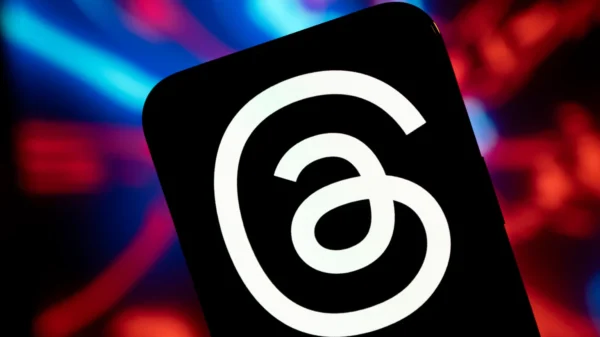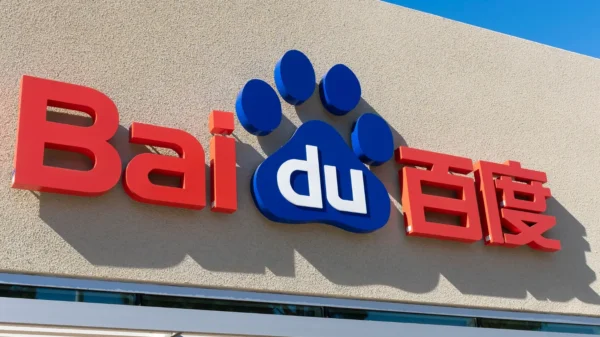Binance fees: A comprehensive guide for traders
Understand the fees associated with using Binance and how they may impact your trading strategy.
KEY TAKEAWAYS
- Binance is a popular cryptocurrency exchange that charges various fees for trading, withdrawals, and deposits.
- The fees charged by Binance depend on the type of transaction and the cryptocurrency involved.
- Binance offers discounts on trading fees for users who hold its native token, BNB, and who have a high trading volume.
- Traders should be aware of the different fees and discounts offered by Binance to optimize their trading strategy and minimize their costs.
- By using the tips and strategies outlined in this comprehensive guide, traders can navigate Binance’s fees and make informed decisions to maximize their profits.
If you’re a trader who’s looking to explore the world of cryptocurrency, then you’ve probably heard of Binance. This popular cryptocurrency exchange has become a go-to platform for many traders, offering a wide range of trading options and features. But, like with any exchange, there are fees involved. Understanding these fees is crucial to making informed trading decisions. That’s where this comprehensive guide to Binance fees for traders comes in. You’ll learn about the different types of fees on the platform, how they’re calculated, and how you can minimize them. Whether you’re new to Binance or you’re a seasoned trader, this guide will provide you with the knowledge you need to navigate Binance’s fee structure with confidence.
Binance Trading Fees
Binance charges two types of fees for trading on their platform: Maker and Taker fees. The fees you are charged depend on whether you are a Maker or Taker, and your VIP trade volume level.
Maker and Taker Fees
Maker fees are charged when you place an order that is not immediately filled but rather added to the order book. This adds liquidity to the market, so Maker fees are lower than Taker fees. Taker fees are charged when you place an order that is immediately filled at the market price.
How to Calculate Fees
The fee you are charged for a trade can be calculated using the following formula:
Fee = (Trade Amount x Fee Rate)
For example, if you make a trade of 1 Bitcoin (BTC) at a fee rate of 0.1%, the fee charged would be:
Fee = (1 x 0.001) = 0.001 BTC
Fee Tiers and Discounts
Binance offers discounts on trading fees based on your VIP trade volume level. The higher your VIP level, the more you trade, and the more discounts you get. There are 9 VIP levels, ranging from 0 to 9, with level 9 being the highest.
The fee tiers and discounts are as follows:
- VIP 0: 0% discount on Maker and Taker fees
- VIP 1: 20% discount on Maker and Taker fees
- VIP 2: 25% discount on Maker and Taker fees
- VIP 3: 30% discount on Maker and Taker fees
- VIP 4: 35% discount on Maker and Taker fees
- VIP 5: 40% discount on Maker and Taker fees
- VIP 6: 45% discount on Maker and Taker fees
- VIP 7: 50% discount on Maker and Taker fees
- VIP 8: 55% discount on Maker and Taker fees
- VIP 9: 60% discount on Maker and Taker fees
To qualify for each VIP level, you need to meet a minimum trading volume requirement for the past 30 days. The minimum trading volume requirement is in US dollars (USD) and varies depending on the VIP level you are trying to reach.
Binance Withdrawal Fees
Binance is one of the most popular cryptocurrency exchanges in the world, offering traders a wide variety of coins, tokens, and trading options. While trading on Binance is relatively straightforward, understanding the fees involved can be a bit more complicated.
Explanation of Binance Withdrawal Fees
Binance withdrawal fees are based on the type of asset being withdrawn. Generally speaking, most cryptocurrencies on Binance have a flat rate fee of 0.0005 BTC or the equivalent of the asset being withdrawn. This fee can vary depending on the digital asset being withdrawn, however, so it is important to check the fee for each asset before making a withdrawal.
In addition to the flat rate fee, Binance also charges a “network fee” which is determined by the blockchain network itself and is outside of Binance’s control. This fee is typically paid in the asset being withdrawn and is used to pay miners for processing the transaction. The network fee is typically a small fraction of the flat rate fee, but it can vary depending on the blockchain network and the amount of the withdrawal.
Calculation of Withdrawal Fees
To calculate the total withdrawal fee for a given asset, simply add the flat rate fee and the network fee. For example, if you are withdrawing 0.01 BTC and the flat rate fee is 0.0005 BTC and the network fee is 0.0007 BTC, then your total withdrawal fee would be 0.0012 BTC.
It is also important to note that Binance does not charge any fees for deposits, so you will only be charged fees when making a withdrawal.
Comparison with Other Exchanges
When comparing Binance’s withdrawal fees to other exchanges, it is important to remember that Binance does not charge any fees for deposits. This can be a major advantage for traders looking to make frequent deposits and withdrawals, as it eliminates the need to pay fees for each deposit or withdrawal.
In terms of fees, Binance’s withdrawal fees are generally competitive with other exchanges. While fees can vary depending on the asset being withdrawn and the network fee, Binance’s fees are generally lower than other exchanges in most cases.
Binance Deposit Fees
Binance is one of the world’s leading cryptocurrency exchanges, and it offers users a variety of fees that they must pay to use the platform. This includes deposit fees, which are charged for the transfer of funds into the Binance exchange.
Explanation of Binance Deposit Fees
Binance deposit fees are charged for any funds that are transferred into the Binance exchange. These fees are calculated in the form of a percentage of the total amount that is being deposited. The percentage rate of the deposit fee will vary depending on the currency that is being deposited. For example, the deposit fee for Bitcoin (BTC) is 0.0005 BTC, while the deposit fee for Ethereum (ETH) is 0.01 ETH.
Calculation of Deposit Fees
Binance deposit fees are calculated based on the total amount of funds that are being transferred into the exchange. For example, if a user were to deposit 0.1 BTC into their Binance account, the deposit fee would be 0.0005 BTC. This fee is then subtracted from the total amount of funds that are being deposited. In this example, the user would only receive 0.0995 BTC in their Binance account.
Comparison with Other Exchanges
When compared with other cryptocurrency exchanges, Binance has relatively low deposit fees. For example, many other exchanges charge a flat fee for deposits, regardless of the currency that is being deposited. This flat fee is usually much higher than the percentage-based fees that Binance charges. Additionally, some exchanges charge additional fees for deposits that are made with certain payment methods, such as credit cards or PayPal. Binance does not charge additional fees for any payment methods.
Binance Margin Trading Fees
Binance is a well-known and respected cryptocurrency exchange platform used by traders worldwide. One of the features that make it popular is its margin trading service. Margin trading allows traders to borrow funds to trade, which can amplify their gains or losses. However, as with any trading service, fees are an essential factor to consider.
Explanation of Binance Margin Trading Fees
Binance margin trading fees are calculated based on the trade’s size and the period the trader wants to borrow funds. The fees are charged in two ways: the funding fee and the interest fee.
The funding fee is the fee that traders have to pay for borrowing funds. It is calculated based on the size of the position and the funding rate, which is determined by the market demand for the asset. The funding fee is charged every eight hours, and it can be positive or negative, depending on the market demand.
The interest fee is the fee charged for the duration the trader holds the borrowed funds. The interest fee is calculated based on the borrowed amount and the interest rate, which is determined by Binance. The interest fee is charged every hour, and it accumulates until the trader returns the borrowed funds.
Calculation of Margin Trading Fees
To calculate the margin trading fees on Binance, you can use the following formula:
- Fees = (Position size * funding rate) + (Borrowed amount * interest rate * duration)
For example, suppose a trader borrows $1,000 with an interest rate of 0.01% per hour and holds the position for 24 hours. In that case, the interest fee would be:
- Interest free = $1,000 * 0.01% * 24 = $0.24
Suppose the funding rate for the position size is 0.01%. In that case, the funding fee would be:
- Funding fee = $1,000 * 0.01% = $0.1
Therefore, the total margin trading fee would be:
- Total fee = $0.24 + $0.1 = $0.34
Comparison with Other Exchanges
Binance margin trading fees are relatively competitive compared to other exchanges. For instance, BitMEX, another popular cryptocurrency exchange, charges a higher fee of 0.075% for perpetual contracts. Binance also offers a discount of up to 20% on margin trading fees for traders who hold Binance Coin (BNB), the exchange’s native token. Moreover, Binance allows traders to customize their margin trading fees by adjusting the interest rate and funding rate.
Binance Futures Trading Fees
Explanation of Binance Futures Trading Fees
Binance offers two types of futures trading fees, maker fees, and taker fees. Maker fees are charged when a trader places an order that is not matched immediately. Taker fees are charged when a trader places an order that is matched immediately. The fees are based on the amount of cryptocurrency being traded, and the fees can vary depending on the market conditions.
Binance also offers discounts for traders with higher trading volume. These discounts are based on the 30-day trading volume of the user and can range from 0% to 0.02%. The higher the volume, the higher the discount.
Calculation of Futures Trading Fees
The calculation of Binance futures trading fees is simple. The fees are calculated based on the amount of cryptocurrency being traded and the user’s 30-day trading volume. The fees are then multiplied by the maker or taker fee rate, depending on the order type. For example, a user with a 30-day trading volume of 1,000 BTC and a maker fee rate of 0.1% would be charged 0.1 BTC in fees for placing an order of 1,000 BTC.
Comparison with Other Exchanges
When comparing Binance’s fees to other exchanges, it’s important to note that Binance offers one of the lowest fees in the industry. Binance’s maker and taker fees are generally lower than those of most other exchanges, making it an attractive option for traders. Additionally, Binance’s discounts on higher trading volumes make it even more attractive to traders with large volumes.
Other Binance Fees
Apart from spot and futures trading fees, Binance charges some other fees that traders should be aware of. This section will explain these fees and provide examples to help you understand them better. It’ll also compare Binance fees with those of other exchanges, so you can make an informed decision when choosing a platform to trade on.
Explanation of Other Fees on Binance
One of the most common fees on Binance is the withdrawal fee. Whenever you withdraw a cryptocurrency from your Binance account, you will be charged a fee. The fee amount varies depending on the cryptocurrency you are withdrawing. For example, the withdrawal fee for Bitcoin (BTC) is 0.0005 BTC, while the fee for Ethereum (ETH) is 0.01 ETH.
Binance also charges a deposit fee for some cryptocurrencies. This fee is usually charged by the blockchain network that the cryptocurrency is based on, and Binance passes it on to the user. For example, the deposit fee for Bitcoin (BTC) is currently set at 0.0005 BTC.
Another fee to be aware of is the Binance Card transaction fee. Binance offers a Visa debit card that allows you to spend your cryptocurrency at merchants that accept Visa. However, whenever you make a transaction with the card, you will be charged a fee of 1% of the transaction amount.
Finally, Binance also charges a fee for the use of its OTC (over-the-counter) trading desk. OTC trading is a way of buying and selling large amounts of cryptocurrency outside of the normal exchange order book. The OTC fee is 0.1% of the transaction amount.
Examples of Other Fees
Let’s take a look at some examples to see how these fees work in practice. Suppose you want to withdraw 1 Bitcoin (BTC) from your Binance account. The withdrawal fee for BTC is 0.0005 BTC, so you will be charged 0.0005 BTC for the transaction.
Now let’s say you want to deposit 10 Ethereum (ETH) into your Binance account. The deposit fee for ETH is currently set at 0.01 ETH, so you will be charged 0.01 ETH for the transaction.
If you decide to use the Binance Card to buy a product worth $100, you will be charged a transaction fee of $1 (1% of $100).
Finally, let’s say you want to use the OTC trading desk to buy 100,000 USD. The OTC fee for this transaction would be 0.1% of 100,000 USDT, which is 100 USDT.
Comparison with Other Exchanges
When compared to other exchanges, Binance fees are generally considered to be competitive. For example, Coinbase charges a withdrawal fee of $25 for wire transfers and $0.99 for ACH transfers. Kraken charges a withdrawal fee of $5 for domestic wire transfers and $35 for international wire transfers.
Binance’s deposit and withdrawal fees are also lower than those of some other exchanges. For example, Bitfinex charges a deposit fee of 0.1% for all cryptocurrencies and a withdrawal fee of 0.0004 BTC for Bitcoin withdrawals.
Ultimately, Binance charges several other fees besides trading fees. These include withdrawal fees, deposit fees, Binance Card transaction fees, and OTC trading fees. While these fees may seem small, they can add up over time, so it’s important to be aware of them. When compared to other exchanges, Binance fees are generally competitive. As a trader, it’s important to consider all of the fees involved when choosing an exchange to trade on. Taking Binance’s fees into account, it is a great option for traders who are looking for a secure and reliable platform to trade crypto assets on.
How to Minimize Binance Fees
Binance fees can be expensive for traders and investors, but several strategies can be employed to reduce them. Read on to find out tips and tricks to minimize your Binance fees and maximize the benefits of the different fee tiers and discounts available.
Utilize Binance’s Fee Tiers
For traders who want to reduce their Binance fees, one of the best ways to do so is to take advantage of the different fee tiers available. Binance offers five fee tiers, ranging from zero to 0.2%. The higher the tier, the lower the fees. For example, at the highest tier, the Maker fee is 0.002% and the Taker fee is 0.02%. To qualify for the highest tier, a user must hold 500 BNB or more in their account.
Use Binance’s Referral Program
Another way to reduce Binance fees is to take advantage of the referral program. Through this program, users can get up to 50% of the trading fees of the people they refer back to Binance. The more people referred, the higher the referral bonus. This is an easy way to save money on fees while helping other traders out.
Utilize Binance’s Discounts
Binance also offers discounts on certain trading pairs. For example, if a trader is buying or selling ETH/USDT, they can get a 25% discount on their trading fees. This is a great way to save money on fees while still trading the same assets.
Trade in Bulk
Finally, traders can save money on Binance fees by trading in bulk. When trading in bulk, the fees are much lower than when trading small amounts. This is because Binance offers a volume-based discount on fees. The more a trader trades, the lower the fees.
By following the tips above, traders can minimize their Binance fees and maximize their profits. By taking advantage of Binance’s fee tiers, referral program, discounts, and bulk trading, traders can save money on fees while still trading the same assets.
Final Thoughts
There you have it, the comprehensive guide to Binance fees for traders. By now, you’ve learned about the different types of fees that Binance charges, including trading fees, deposit and withdrawal fees, and other miscellaneous fees. You also now have a clear understanding of the fee structure and how to reduce your fees on Binance. By following the tips and tricks provided in this guide, you can save a significant amount of money and increase your profitability as a Binance trader. Keep in mind that Binance fees are subject to change, so it’s important to stay up-to-date on the latest fee structure. Armed with this knowledge, you’re now well-equipped to navigate the world of Binance fees and make informed trading decisions. Thank you for reading this comprehensive guide on Binance fees, and happy trading!
















































